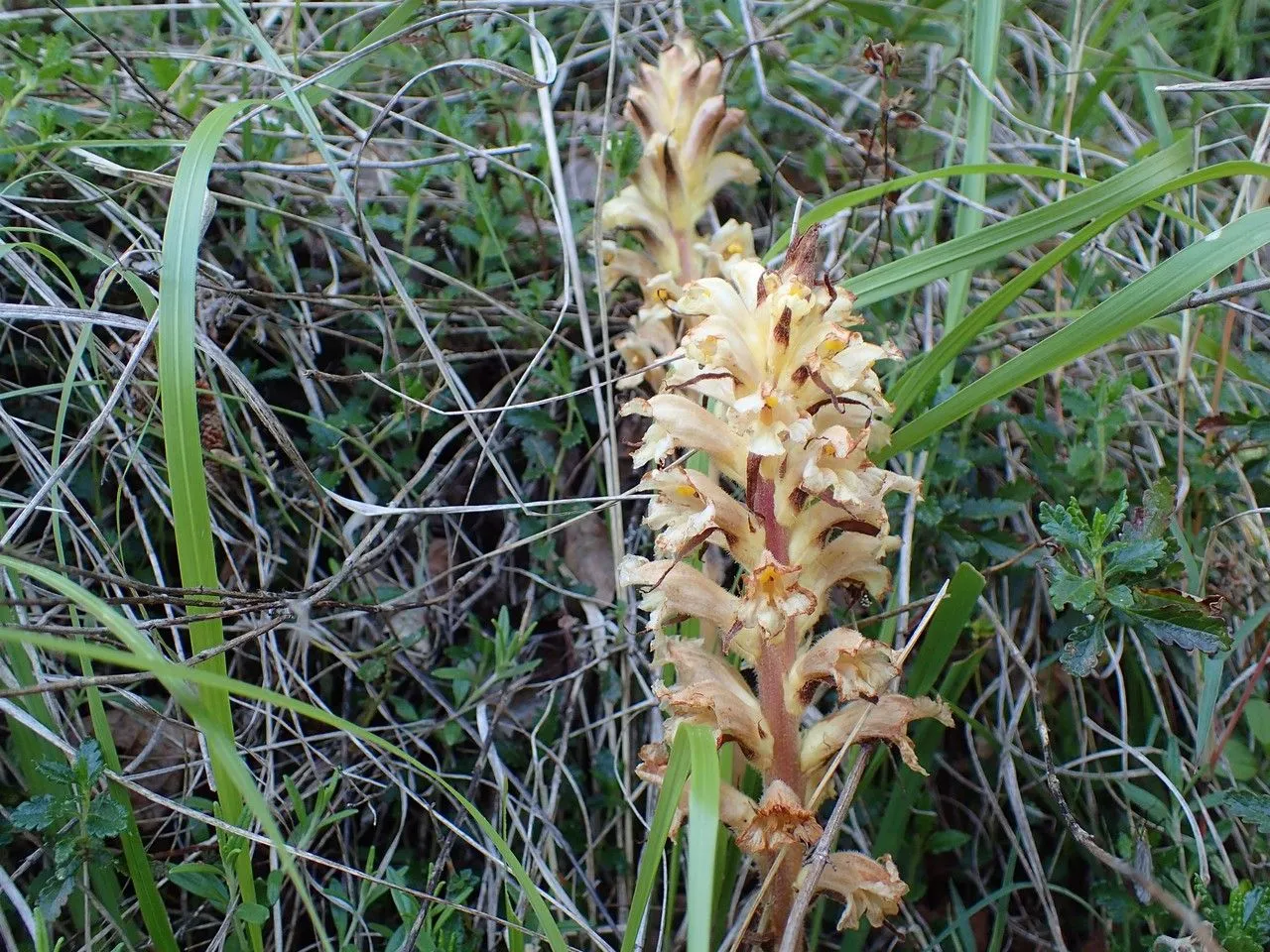
Author: Baumg.
Bibliography: Enum. Stirp. Transsilv. 2: 215 (1816)
Year: 1816
Status: accepted
Rank: species
Genus: Orobanche
Vegetable: False
Observations: Europe to C. Asia and NW. & NC. Iran
Yellow broomrape, scientifically known as Orobanche lutea, is a fascinating parasitic plant belonging to the Orobanchaceae family. First described in 1816 by Baumg. in his publication “Enum. Stirp. Transsilv.”, the plant has been a subject of interest for botanists and plant enthusiasts alike.
This species is native to a diverse geographic range, extending from Europe to Central Asia, including regions of Northwestern and North-Central Iran. Its ability to thrive over such a wide area underscores its adaptability and the ecological significance of parasitic plants.
Yellow broomrape is distinctively recognized for its lack of chlorophyll, which makes it a wholly parasitic plant that relies on its host for survival. It attaches itself to the roots of various host plants from which it draws nutrients and water, effectively making it an intriguing study of plant interaction and survival strategies.
The flower of Orobanche lutea is notable for its striking yellow hue, an attribute that not only contributes to its common name but also makes it a visually appealing species. Though it might be parasitic, its vibrant flowers play an essential role in its reproductive cycle by attracting specific pollinators necessary for the continuation of its life cycle.
In terms of habitat, the yellow broomrape typically favors well-drained soils often found in grasslands and meadows. Its prevalence across such vast and varied regions attests to its hardy nature and the successful adaptation to different environmental conditions.
Overall, Orobanche lutea presents an intriguing study as it defies typical plant behaviors with its parasitic lifestyle, brightening the ecological tapestry with its distinct presence. Whether for academic study or simple appreciation of its unique beauty, the yellow broomrape remains a noteworthy component of the botanical world.
Deu: gelbe sommerwurz
Fra: orobanche rouge
Nld: rode bremraap
Eng: yellow broomrape
En: Yellow broomrape
Nl: Rode bremraap
Fr: Orobanche rouge
De: Gelbe Sommerwurz, Rote Sommerwurz, Rötlichgelbe Sommerwurz
It: Succiamele prataiolo
Taken May 4, 2019 by Bastien Perreuil (cc-by-sa)
Taken Apr 30, 2017 by Yoan MARTIN (cc-by-sa)
Taken May 14, 2022 by Corinne Levy-Neumand (cc-by-sa)
Taken May 22, 2020 by Rupert Schnell (cc-by-sa)
Taken May 27, 2019 by Juli Juli von der Rolle (cc-by-sa)
© copyright of the Board of Trustees of the Royal Botanic Gardens, Kew.
© copyright of the Board of Trustees of the Royal Botanic Gardens, Kew.
© copyright of the Board of Trustees of the Royal Botanic Gardens, Kew.
Taken Apr 30, 2017 by Yoan MARTIN (cc-by-sa)
Taken Apr 30, 2017 by Yoan MARTIN (cc-by-sa)
Taken Apr 30, 2017 by Yoan MARTIN (cc-by-sa)
Taken Apr 30, 2017 by Yoan MARTIN (cc-by-sa)
Taken Apr 30, 2017 by Yoan MARTIN (cc-by-sa)
Taken Apr 30, 2017 by Yoan MARTIN (cc-by-sa)
Taken Jun 28, 2022 by Andreas Häusler (cc-by-sa)
Taken May 5, 2020 by Serge Fournier (cc-by-sa)
Taken May 17, 2015 by Tela Botanica − Yoan MARTIN (cc-by-sa)
Taken Jan 1, 1970 by Photoflora – L’Abbé COSTE (©)
Ph maximum: 7.5
Ph minimum: 7.0
Light: 6
Atmospheric humidity: 3
Bloom months: [‘may’, ‘jun’, ‘jul’]
Soil nutriments: 3
Family: Myrtaceae Author: (F.Muell.) K.D.Hill & L.A.S.Johnson Bibliography: Telopea 6: 402 (1995) Year: 1995 Status:…
Family: Rubiaceae Author: Pierre ex A.Froehner Bibliography: Notizbl. Bot. Gart. Berlin-Dahlem 1: 237 (1897) Year:…
Family: Sapindaceae Author: Koidz. Bibliography: J. Coll. Sci. Imp. Univ. Tokyo 32(1): 38 (1911) Year:…
Family: Asteraceae Author: A.Gray Bibliography: Pacif. Railr. Rep.: 107 (1857) Year: 1857 Status: accepted Rank:…
Family: Fabaceae Author: Medik. Bibliography: Vorles. Churpfälz. Phys.-Ökon. Ges. 2: 398 (1787) Year: 1787 Status:…
Family: Aspleniaceae Author: (Cav.) Alston Bibliography: Bull. Misc. Inform. Kew 1932: 309 (1932) Year: 1932…